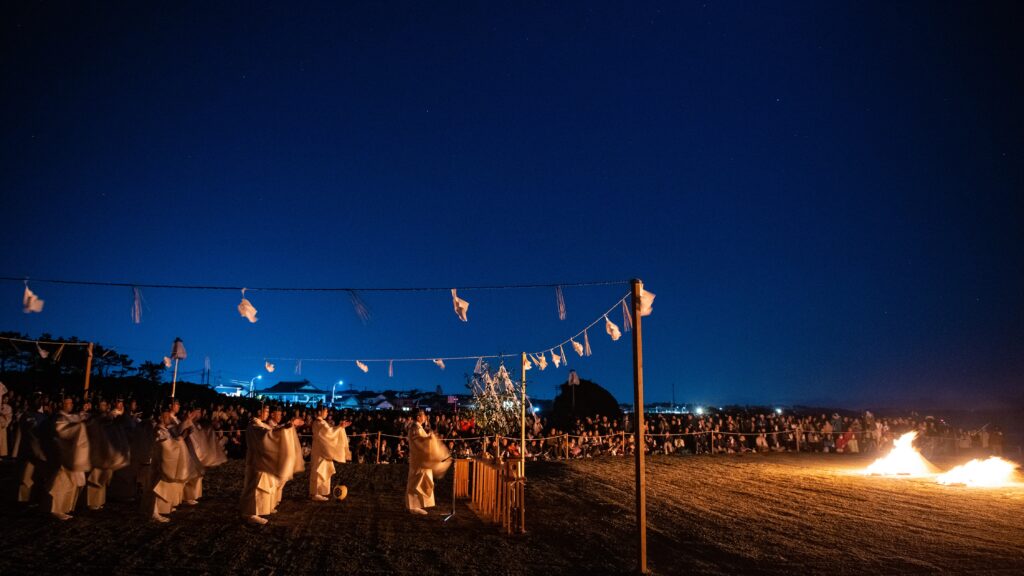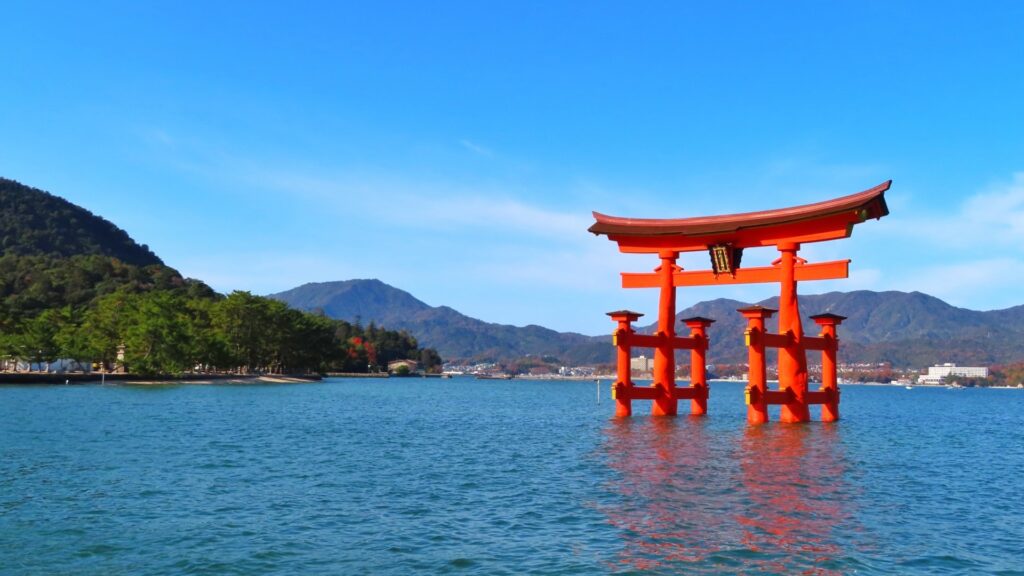Home of Myths and Samurai, A Historic Artery of the Seto Inland Sea Route

The Chugoku region is made up of five prefectures: Okayama, Hiroshima, Yamaguchi, Tottori, and Shimane. It is the home of many ancient kingdoms, shrines, and myths. The Izumo Taisha Shrine for its "mythology of the Kuniyuzuri" (Land Transfer), and the Kibitsu and Kibitsuhiko Shrines, famous for the "Momotaro" legend (a popular hero of Japanese folklore). Later on, the deity of Itsukushima Shrine blessed the warlord, Mori Motonari, enabling him to rule the vast Chugoku region in the 16-17C.
Shrines, Temples & Castles
Izumo Taisha Kamiarisai Festival

Welcoming all deities from nations at the Inasa-Hama shore for the Kamiari-sai Festival. the deities hold a conference to discuss a person’s peaceful connection with others.
(Source: Izumo Taisha / 写真提供:出雲大社)
Izumo Taisha Kuni-Yuzuri Myth

Mystical Secrets of Kuni-Yuzuri, or Transfer land of Izumo to Amaterasu deity of Ise Jingu. A series of archaeological discoveries tell of the existence of a powerful ruler in Izumo.
(Source: Izumo Taisha / 写真提供:出雲大社)
Itsukushima Shrine

Itsukushima Shrine, the blessing of its deity brought Samurai Mori Motonari's victory and made him the king of Western Japan.
Himeji Castle

A World Heritage Site, the 1st Shogun Tokugawa Ieyasu's desire to "Win without fighting” by overwhelming grace and impregnable defense.
Oki Islands

During the Kamakura period, when samurai warriors were on the rise, two emperors failed in their attempts to overthrow the shogunate and were exiled to the Oki Islands.
Taichoro, Fukuzenji Temple

Taichoro, a reception hall for Korean envoys during the Edo period led by Ieyasu. The spectacular view of the Seto Inland Sea has no wo
Matsue, Horan-Enya Festival

Horan Enya festival - an intangible folk cultural asset -, about 100 boats with traditional dancers wearing colorful splendid costumes sail through rivers in Matsue
